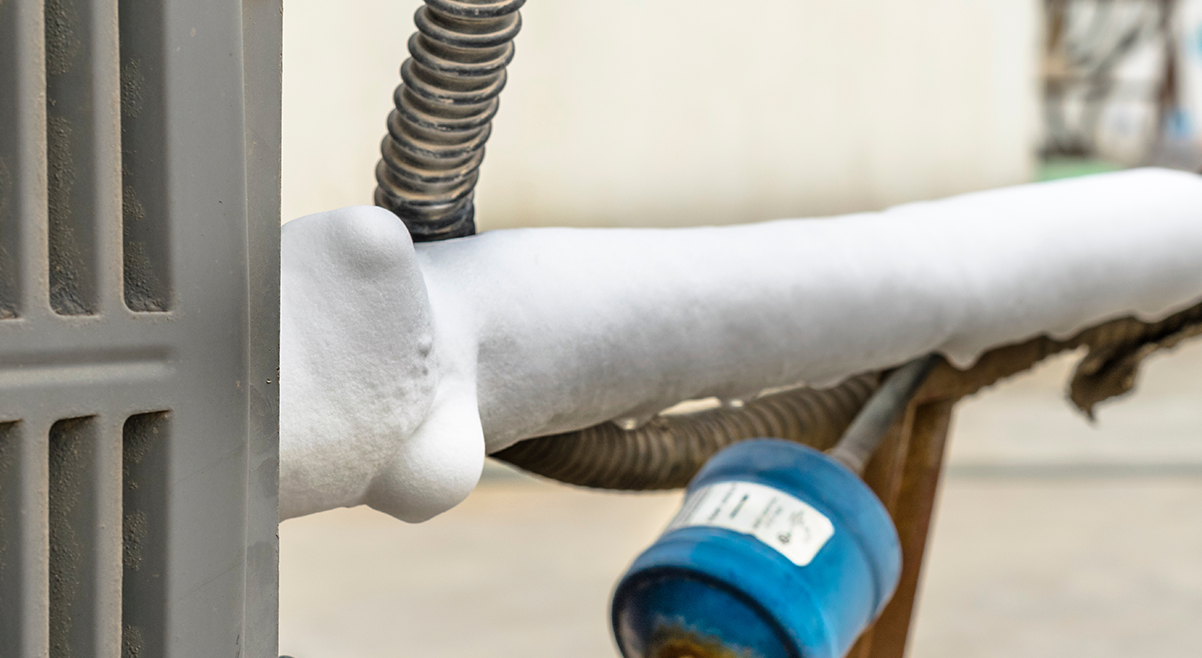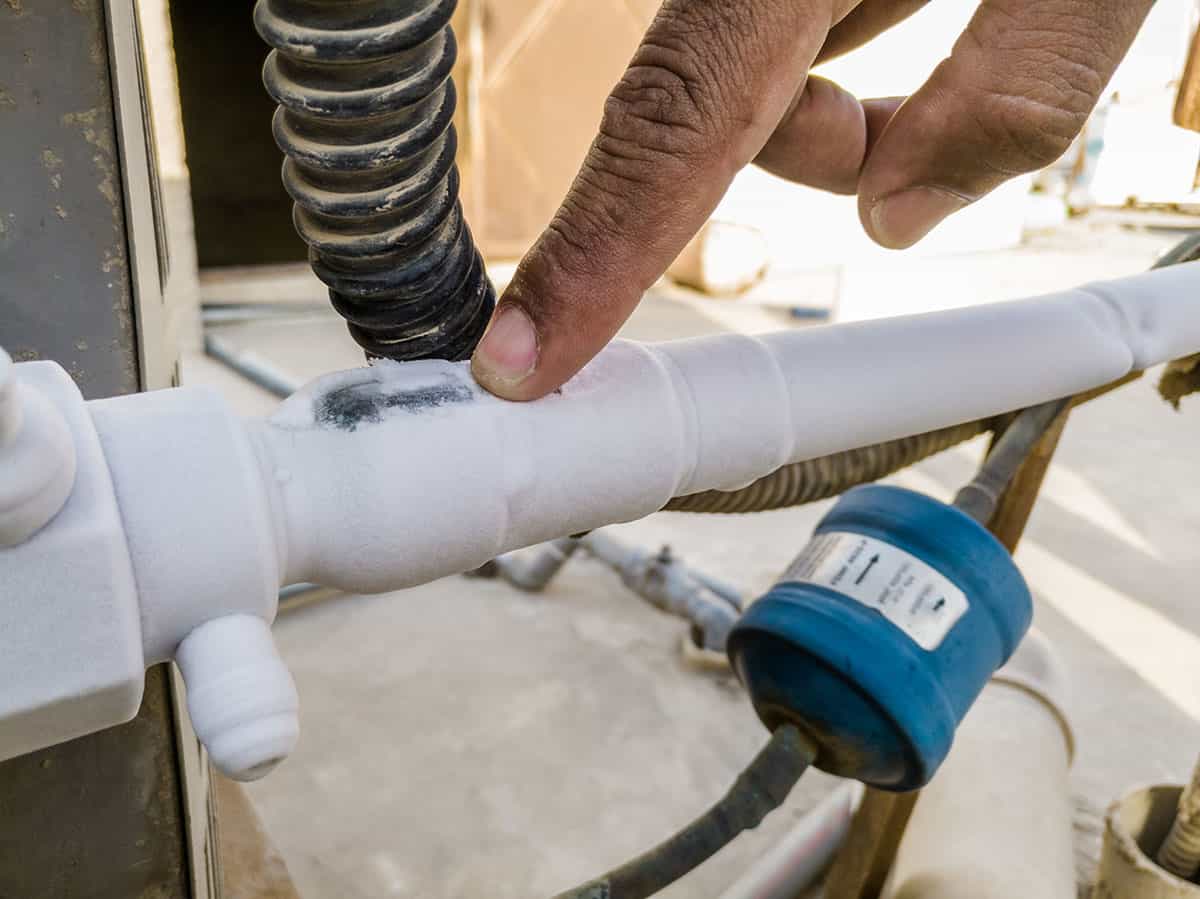Identifying a Frozen AC Pipe - Efficient Fixes for Home Cooling Systems
Identifying a Frozen AC Pipe - Efficient Fixes for Home Cooling Systems
Blog Article
They are making a few great annotation about Have a Frozen AC Line? Here’s How to Fix It in general in this article directly below.

Intro
Uncovering that your AC pipe is frozen can be worrying, especially throughout warm summer season when you count on your ac unit one of the most. Recognizing what to do in such a circumstance is important to prevent additional damage to your cooling system and guarantee your comfort inside.
Comprehending the Causes
Several factors can add to the freezing of an a/c pipe. Recognizing these causes can aid you deal with the issue properly.
Absence of Airflow
One common root cause of a frozen air conditioner pipe is inadequate air movement. When the airflow over the evaporator coil is restricted, it can trigger the coil to go down below freezing temperature, causing ice development on the pipe.
Reduced Refrigerant Levels
Insufficient cooling agent degrees in your air conditioning system can likewise cause a frozen pipe. Low refrigerant degrees can create the stress in the system to go down, leading to the freezing of moisture on the evaporator coil.
Cold Weather Conditions
In colder climates, freezing temperatures outside can contribute to the freezing of AC pipes. If your AC unit is not properly insulated or if there are leakages in the ductwork, cool air can penetrate the system, triggering the pipe to freeze.
Dirty Air Filters
Dirty or clogged air filters can limit air movement in your a/c system, causing various issues, consisting of an icy pipe. It's essential to change or clean your air filters routinely to ensure correct air flow and protect against ice accumulation.
Signs of a Frozen A/c Pipe
Recognizing the indicators of a frozen a/c pipeline is crucial for timely activity.
Decreased Airflow
If you notice a considerable decline in air movement from your vents, it can indicate an icy pipe.
Ice Buildup on the Pipe
Visible ice build-up on the refrigerant line or the evaporator coil is a clear sign of an icy air conditioning pipeline.
Unusual Sounds from the Unit
Unusual noises, such as hissing or bubbling, coming from your air conditioning system can signal that there's ice present on the pipeline.
Immediate Actions to Take
When confronted with an icy air conditioning pipe, it's necessary to act quickly to stop more damage to your cooling system.
Switching off the a/c
The initial step is to switch off your ac system to prevent the system from running and worsening the issue.
Looking for Blockages
Check the area around the interior system for any blockages that may be obstructing airflow, such as furnishings or curtains.
Defrosting the Pipe
You can use mild methods like putting towels taken in warm water around the icy pipe to aid thaw it slowly.
Safety nets
Taking preventive measures can assist stay clear of future incidents of an icy air conditioning pipeline.
Regular Maintenance Checks
Set up normal upkeep contact a specialist HVAC service technician to make sure that your AC system is running successfully.
Changing Air Filters
Regularly change or clean your air filters to stop airflow limitations and maintain optimal efficiency.
Insulating Exposed Pipes
If your air conditioner pipelines are subjected to cold temperature levels, take into consideration protecting them to stop freezing throughout winter season.
Looking For Professional Help
If DIY methods fall short to fix the issue or if you're not sure about exactly how to continue, it's best to look for support from a certified HVAC technician.
When DIY Methods Fail
If your attempts to thaw the pipeline or address various other issues are unsuccessful, it's time to call a professional.
Significance of Hiring a Professional HVAC Technician
A licensed HVAC professional has the knowledge and tools required to identify and repair problems with your a/c system securely and effectively.
Conclusion
Taking care of an icy AC pipe can be an aggravating experience, however recognizing just how to react can aid reduce damage and recover convenience to your home. By understanding the causes, recognizing the indications, and taking prompt action, you can properly address the issue and stop future incidents.
Frozen AC Line: Why It Happens & What To Do About It
A frozen AC line can be a rather peculiar sight in a place like Phoenix, Arizona where nothing ever freezes. In this post, we’ll discuss what makes an air conditioner line frozen – and what you can do about it.
Dirty Air Filters
Did you know that you should be cleaning or replacing your air filters on a monthly basis? Failing to do this can result in airflow issues that, in turn, cause your evaporator coils and lines to freeze over. You’ll notice a buildup of ice on both components, although the buildup on your pipes will, of course, be more evident unless you open your air condition up to reveal the coils.
What To Do About It
Give your air filter a good cleaning if it’s reusable. If not, replace the filter outright. Next, switch your air conditioner’s fan setting on and leave it there for 2-3 hours. This will draw warm air in, helping to thaw your evaporator coil. You can also check out this article for some tips on cleaning the coils themselves if you’d like to speed the process up. Before you switch the unit back to its normal state, make sure the supply vents are completely unobstructed and free of dust or other debris.
If you keep having this issue even after replacing your filters regularly, contact a local HVAC repair company and have them inspect your evaporator coil, ductwork, and any other components that may be at fault. If you live in the Phoenix, Arizona area, give American Home Water and Air a call.
Low Refrigerant Levels/Leakage
What To Do About It
Contrary to what air conditioner “recharge” companies often tell their clients about refrigerant, it should never need to be simply refilled. You see, refrigerant runs in what experts refer to as a “closed loop.” Refrigerant really shouldn’t be leaving that loop. If it is, you’ve got a leak.
Paying someone to come and pump more refrigerant into your system (aka “recharge” it) isn’t the solution. Doing that will simply kick the can down the road. Besides, refrigerant leaks can be harmful to the environment and people in your home.
Rather, you need to take care of the leak with the help of a technician. Check out this article for some more information about dealing with air conditioners that are leaking refrigerant. Before you contact a technician, switch your thermostat to the off position. Then, switch the fan setting on and let it run for 2-3 hours so the unit can thaw.
Improper Temperature Setting
Improper temperature settings can also cause a drop in your air conditioner’s pressure. What many people don’t realize is that air conditioners are actually designed to run when temperatures have fallen above roughly 60 degrees Fahrenheit. If you run the unit when it’s cold outside, you’ll run into many issues, including frozen components.

I was guided to that editorial about Why Is Ice On My Outside Air Conditione from an associate on a different domain. For those who enjoyed our article kindly do not forget to pass it around. Thank you so much for your time invested reading it.
Call Today Report this page